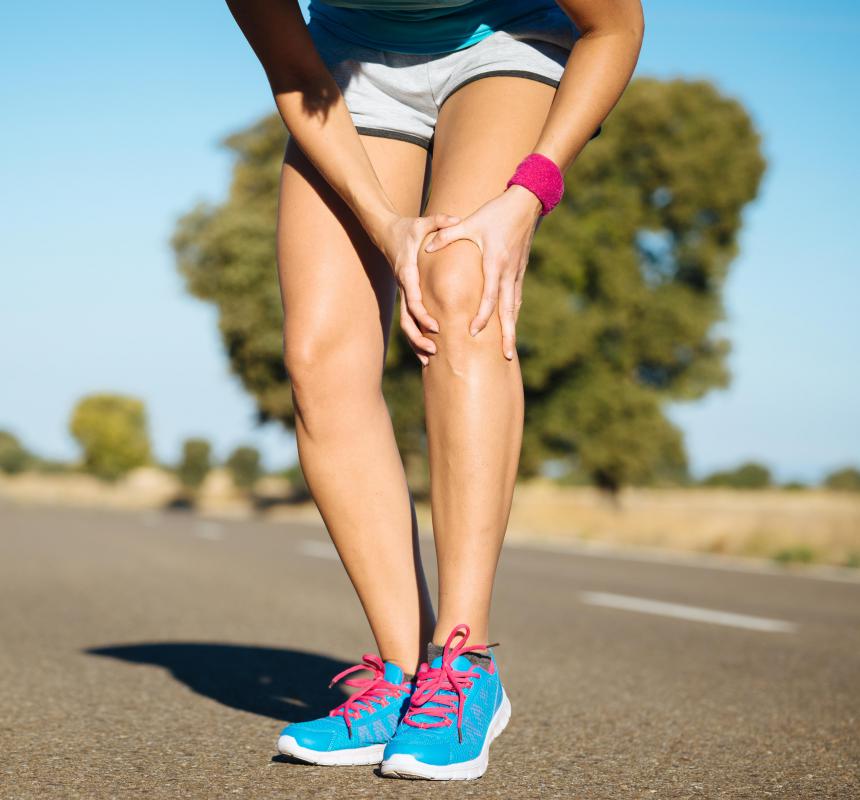At TheHealthBoard, we're committed to delivering accurate, trustworthy information. Our expert-authored content is rigorously fact-checked and sourced from credible authorities. Discover how we uphold the highest standards in providing you with reliable knowledge.
What Is a Femoral Trochlea?
The femoral trochlea is a key component of the patellofemoral joint in the knee. The patellofemoral joint is one in a set of two junctures that connects the femur to the kneecap and lower leg. This indention or trochlea located on the femur, which is also referred to as the thigh bone, provides a channel-like groove to allow for supportive structures to attach the leg bones together.
The knee is a juncture where the upper and lower leg meet, and is one of the most complicated joint systems in the body. Joined together by several ligaments such as the anterior and lateral cruciates, this hinge-like joint allows the leg to bend and move. The ligaments provide stability by limiting the amount of sideways movement, rotation and forward shifting of the tibia, the main lower leg bone. Menisci, or pockets of cartilage, are durable yet elastic tissues that provide shock absorption to decrease the amount of stress placed on the knee bones when walking.

The patella, or knee cap, is a triangular-shaped bone that floats above this union point. The main job of the knee cap is to offer protection to the connection point of the upper and lower leg. This bone almost hovers over the intersection where these two long bones meet, so the patellofemoral joint is necessary to keep the knee cap in place. Without the femoral trochlea, the patella would be unable to maintain its position.

Also known as the patellar groove, the femoral trochlea is divided into two sections, the medial and lateral segments. The proximal section, which is the area closest to the trunk, is a shallow indentation whereas the distal portion is somewhat deeper. The distal or lower segment forms an intercondylar notch. This is a depression located near the condyles, the rounded protuberances of the long bones necessary for the attachment of muscles and the smooth gliding of bones within the joint area.

Knee problems and pain can arise when the knee cap slides away from the femoral trochlea. This can cause the knee cap to “track” poorly. It may also cause the knee cap to become displaced from its position, a condition referred to as patella dislocation or subluxation.
Damage to the knee cap due to a condition called chondromalacia, in which there is a softening of the underside of the patella, can inhibit the proper alignment of the knee joint in the femoral trochlea. Injuries or some knee malformations, such as excessive rotation of the femur called femoral torsion, can cause the knees to turn inwards toward each other and create a poor alignment of the knee inside the femoral trochlea, causing pain and dysfunction.
AS FEATURED ON:
AS FEATURED ON:













Discuss this Article
Post your comments